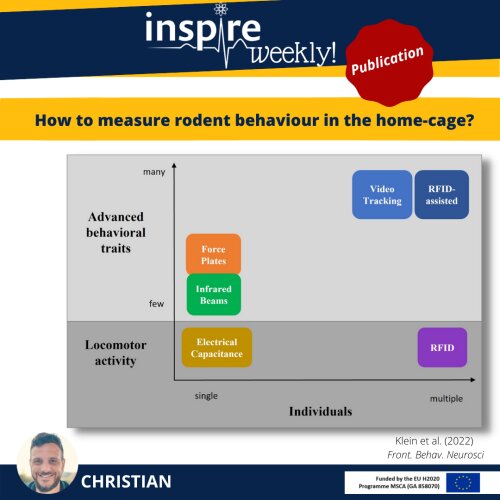13/04/2022 - Christian (ESR #4)

Understanding animal behaviour is crucial to a large variety of research fields. Recent computational and technological advances have led to several automated methods and technologies to measure and quantify behavioural aspects of a wide variety of animal species, ranging from basic voluntary locomotor activity towards a more complex and comprehensive behavioural repertoire. These advances also enhance the opportunity to measure animals´ behaviour in their most ethological meaningful laboratory environment: the home-cage.1
As part of my PhD I reviewed existing methods and technologies which are frequently applied to measure behavioural aspects of rodents in their home-cage.2 These range from targeting voluntary locomotor activity measurements (electrical capacitance technology and RFID) towards more advanced methods which expand the analysis of the behavioural repertoire beyond basic locomotor by force plates, infrared beam frames or (RFID-assisted) video tracking technology. It also sheds light on their benefits and limitations and aims to support (non-)behavioural and multidisciplinary researchers in choosing an appropriate method for their specific research needs, especially for those who accepted the challenge to introduce social housing as a refinement strategy and thereby contributing to the 3Rs. It furthermore gives insights into current and future technological developments emphasising on the challenges associated with monitoring multiple rodents in a social context.
References:
- Voikar, V., & Gaburro, S. (2020). Three pillars of automated home-cage phenotyping of mice: novel findings, refinement, and reproducibility based on literature and experience. Frontiers in Behavioral Neuroscience, 193.
- Klein, C. J. M. I., Budiman, T., Homberg, J. R., Verma, D., Keijer, J., & Van Schothorst, E. M. Measuring locomotor activity and behavioral aspects of rodents living in the home-cage. Frontiers in Behavioral Neuroscience, 115.